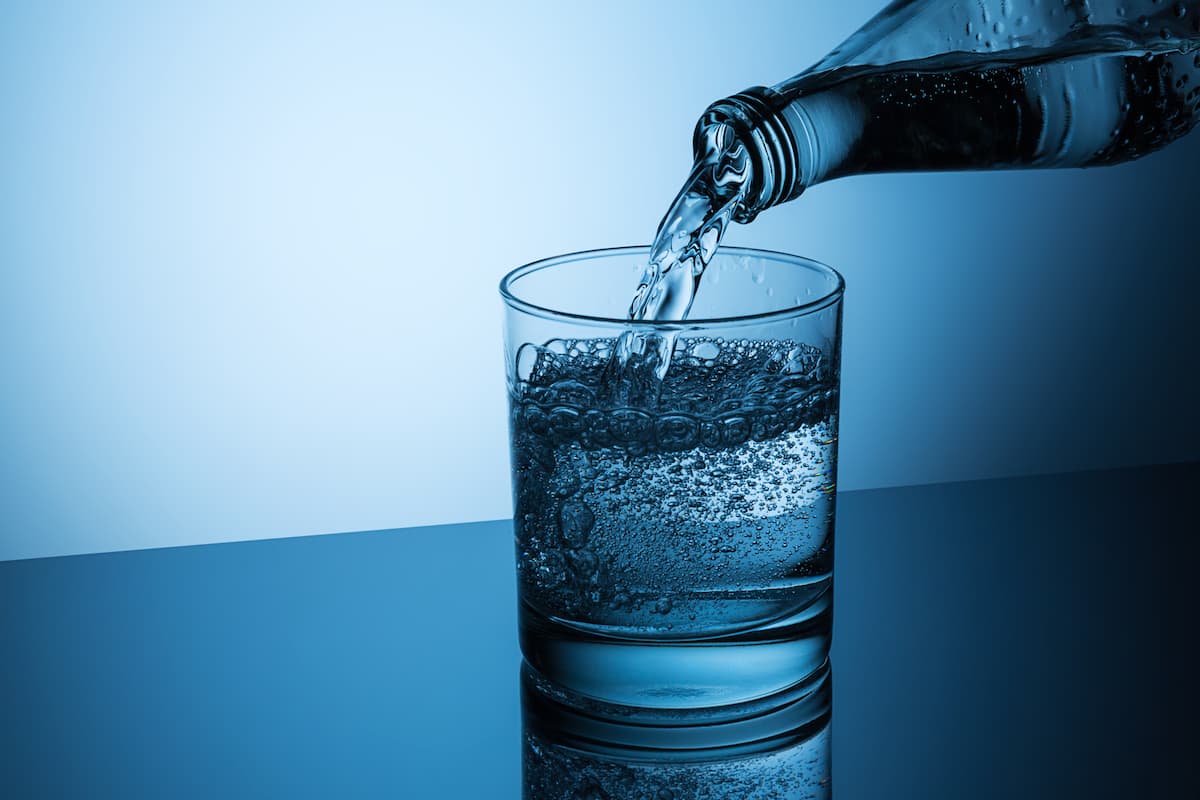The bottled water that you grab at the airport to hydrate for your flight is most likely tap water, perhaps filtered or distilled and remineralized, but not necessarily. It’s nothing special; it’s tap water in a bottle. It’s water that is portable.
Other bottled waters, perhaps shipped to your location from specific natural sources, are put in a bottle in order to transport their special characteristics to you. These waters offer more than mere hydration. They may come from actual springs or from wells drilled next to them, from glaciers, icebergs, or even the deep sea as in the case of Hawaiian deep sea water that is melted iceberg water now on the sea floor.
People who categorize and judge bottled waters do so by their origins as well as their physical characteristics: their mineral makeup, pH, and level of carbonation. As to the latter, waters are classified as still, effervescent, light, classic, or bold. Badoit water from France is barely carbonated and considered in the effervescent category, while forcefully carbonated Perrier is considered bold.
Mineral solids found in bottled waters are categorized in a few different ways. Total dissolved solids (TDS) is a measure of solids in a water, while water hardness only considers the calcium and magnesium. For bottled water, the TDS level (measured in mg/liter or parts per million; these are roughly equivalent) is a pretty good indicator of how much flavor the water carries from minerals.
Mountain Valley Spring Water is at 220 ppm total dissolved solids, Badoit is 1,200, and Gerolsteiner from Germany is about 2,500!
Bottled waters list their mineral makeup—both of TDS and individual mineral levels—on their websites, but it’s often easier to find them on Wikipedia where they are sometimes listed in the sidebar. Common minerals found in mineral waters are calcium, magnesium, sodium, and potassium. Most minerals waters have a relatively low sodium chloride (table salt) level, compared with sodium carbonate/bicarbonate (baking soda).
You can also find the pH of bottled waters on brands’ websites or Wikipedia. pH is a measure of the acidity or basicity (alkaline) qualities of liquids. Acidic water can taste sour, while alkaline water can taste bitter and have a slippery feel. Slightly basic waters may taste sweet. We’ll skip the debate about the so-called healthy qualities of alkaline water here.
All of these factors—the effervescence, total solids, relative mineral makeup, and pH—will determine how a mineral water tastes. Some waters taste very neutral, some “fresh,” some salty, some rich. I don’t buy bottled water for everyday drinking (wasteful!), but I will pick up interesting water brands for a special treat, much like grabbing a bottle of wine for dinner. I like to compare different brands to each other on their own, or when mixed into cocktails.

Using Water in Spirits
A lot of water is used in the production of spirits, and a lot of brands spend time bragging about their pure, special water sourced from limestone caves or aquifers or rivers. But nearly all the time, this water is only used during fermentation of the raw ingredients, where the minerals provide nutrients for fermenting yeast. The fermented beer or wine is then distilled to remove most of the water (and concentrate the alcohol). Most spirits are then diluted back down to bottling proof, but with distilled water that’s free from all mineral content and its inherent flavors. So, that magic special water that distillers brag about does impact the flavor of the spirit you’re drinking, but there’s not very much of it actually in the bottle on the shelf.
That said, the water that you add to those spirits at home, in the form of Bourbon and Branch (bourbon and water), Scotch and Soda, or even vodka on the rocks, can impact the flavor of the spirit.
In my tasting experiments, I have found that different waters can amplify floral, honey, or smoky notes in scotch whiskey, and at higher levels make a whiskey taste sweeter or more citrusy. And these experiments were just with flat water. With carbonation in the mix, the waters would be more acidic (as all carbonated waters are) with different levels of carbonation impacting which flavor elements are brought out in the popping bubbles above the top of the glass.
As for ice, you would probably assume that delicious, mineral-rich water would have a positive impact on drinks as they dilutes, but strangely I’ve found the opposite to be true. I like my ice made with water that’s filtered and that has only a small quantity of dissolved solids. You might experiment and find you prefer something different.
But do experiment. Whether it’s for a simple Vodka Soda or a classic Highball, measure out equal quantities of spirit and soda with several different bottled waters to compare them. You might be surprised at just how much of a difference bottled mineral water makes.
If you want more information, FineWaters.com is a great resource for categorizing waters, water tasting and pairing, and brand profiles.



